- Culture & Travel
Fabulous Painting of the Sari and its Many Drapes
- ByRadhika Bhalla

Seated Women 2 by Delhi-based artist, Namrata Kumar.
Art can evoke a memory, a feeling, a collective understanding of culture or a region. That is precisely what Delhi-based artist Namrata Kumar’s paintings do, of women in saris who are off to the bazaar, or dressed in their finery for a special occasion. Their faces not quite clear, often nondescript, but the energy is palpable.
It is entirely why her prints have found such a large, global fandom on social media. “In 2018, I created one of my first series, Women of Ceylon, which remains extremely popular to this day. These were small, 5 x 5 inch portraits referenced from photographs of vintage Ceylonese women. Over the years, I found myself constantly drawn to the subject of women in their vibrant saris,” Namrata shares in an exclusive with The Word.. “I love the sari, I feel it’s a very elegant and versatile garment,” she adds.
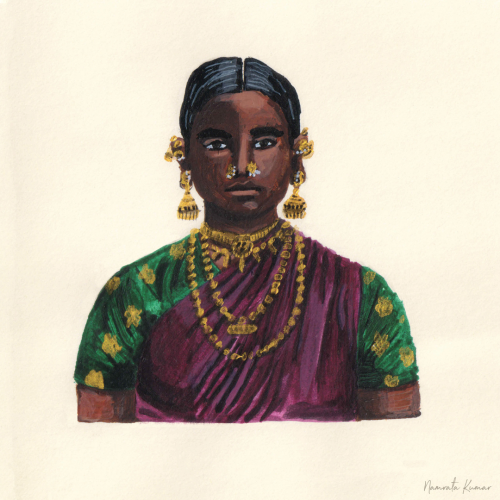
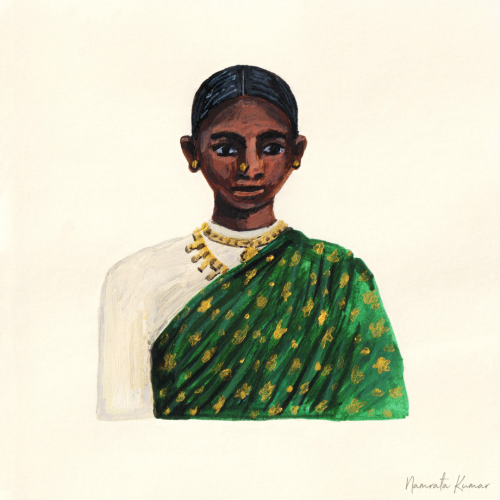
Then, in 2021, Namrata created three more paintings on the same subject, but this time, the women and their garments were painted in their entirety. “The Sri Lankan sari, called the Osariya, is different from the drapes we have seen in India,” the artists explains. “Unlike the Indian-style drape, the Osariya does not have pleats at the waist. Instead, the cloth is wrapped around the waist, with one end draped over the shoulder (called osari pota). The elaborate frill (called odokkuwa) is a unique feature—its size varies according to the region.” In addition, the sari blouse covers the waist and often has puffed sleeves.
Namrata’s portraits of local women from south India, wearing vibrant, traditional saris, are her most recent creations, inspired by her travels to the south. “I have always found the get-up of the local women instantly striking,” she emphasises. “In the south of India, you get to see a lot more traditional fabrics and weaves than in the north. And the way the women dress there, from all walks of life, has a lot of character and pizazz.”
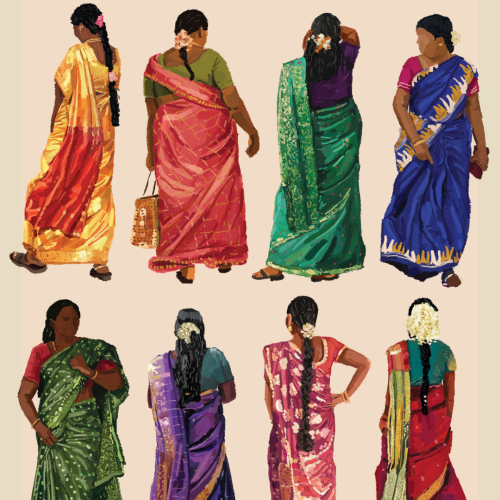

Along with her Sari Series, Namrata is also known for the delightful landscapes and interior scenes that are layered with a remarkable amount of details. And while they aren’t photographic or hyper-realistic images, the depth and mood of the setting are easily conveyed. As she explains, her aim is to capture the essence of her subject, and create works that evokes a feeling, that have the ability to transports the viewer to another world. “I play with strokes, dots, light, and shadow to create depth and movement,” Namrata explains. “It’s this quality that appeals to my audience, the intensity of detail means there’s always visual information one can keep discovering, which gives the artwork life and creates a sense of magic.”
Her work, you see, is inspired by the greats…impressionist paintings of Claude Monet and Pierre Bonnard, expressionist artists like Vincent Van Gogh, and the Fauvist art movement that includes the painter Henri Matisse. “Van Gogh’s work is so, so expressive and evocative, it has the power to move you to tears and to fill you with deep joy. To me, that’s more important than having the skill to draw something perfectly,” she states.
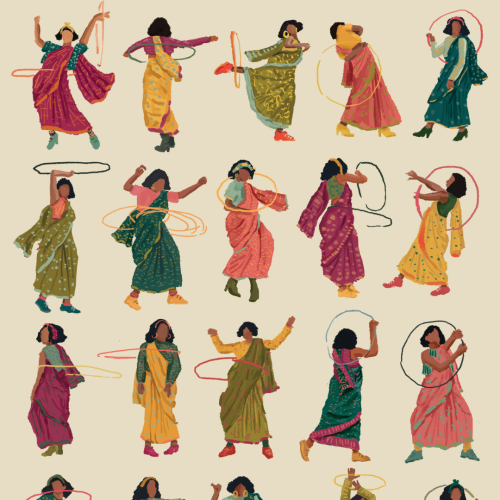
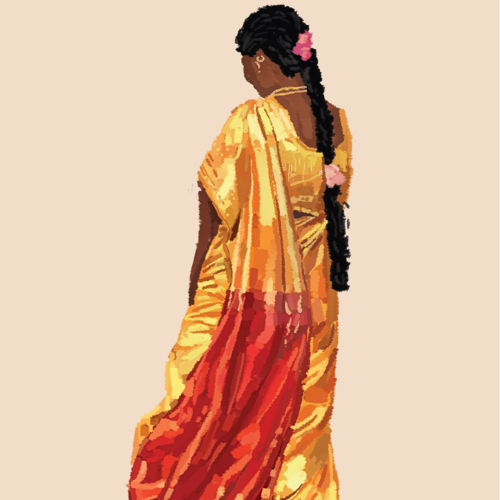
For her elaborate digital paintings, Namrata uses photoshop, and for her hand-painted artworks, she enjoys playing with acrylic paints, and more recently, oil paints. And over the years, she has even been commissioned work by brands like Nicobar, péro, Ritu Kumar, Cord, Google, and Manam Chocolate…all of which have further contributed to her presence on social media. “Some artworks, such as ‘Swing in a Sari’, ‘Saris of the South’, and ‘Flower Sellers – Mogra & Marigold’, were received very well by audiences and led to an instant jump in my Instagram followers,” she recalls.
It’s the colours, the drapes, the characters that Namrata chooses to tell stories of. But most importantly, it’s her vision that brings the works to life. “I really believe that art should be an interpretation of what one sees, rather than being an absolute imitation of reality,” the artist signs off.
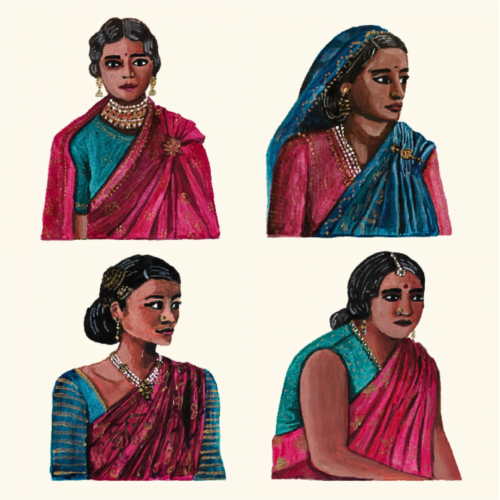
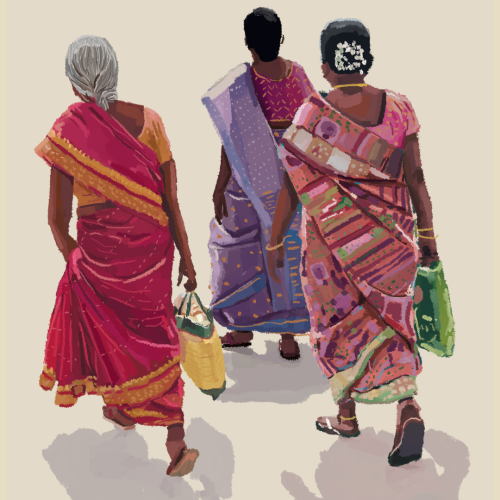
All images: Courtesy the artist
READ MORE
- The Word. and Bumble Celebrated An Evening Of Scent, Sparks, and Mutual Connections
- How The Bicester Collection Quietly Became the Fashion Insider’s Best-Kept Shopping Secret
- Gauri Khan, On Her New Experience Centre In Delhi, Her Favourite Spot At Home, and Great Décor Advice
- With IRTH’s New Store in Noida, The Brands Adds To Its Joyful Delights
- Ranbir Kapoor’s New Perfume, ARKS Day, Reminds Him of His Childhood





